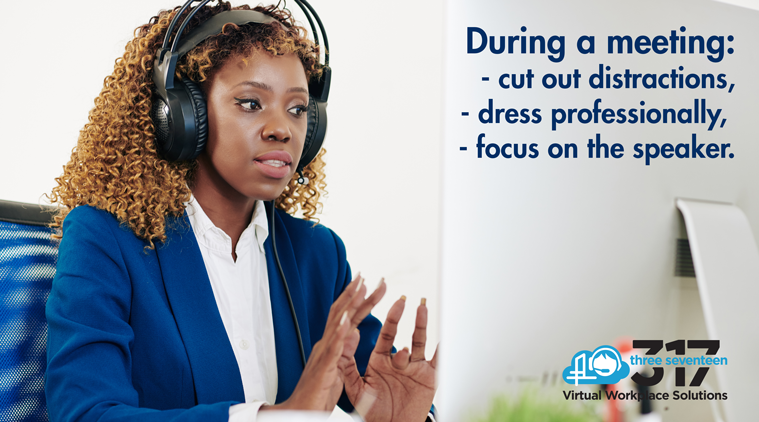These past few years have prompted a change in how we work, whether it’s moving to fully remote or a mixture of in-person (with safe distancing) and working from home. We’ve all heard the new term “Zoomed out” with the increase in virtual meetings.
Some of us utilized that technology before this shift and never really paid attention to the things that are now annoying as we come across challenges to overcome.
Even though we can see each other on screen, it is much more challenging to see the nonverbal cues that can help drive the conversation when we’re face to face. And we can all easily relate to what irritates us during a virtual meeting. Such as:
- People are talking and forgetting to “unmute.” This can be the user’s fault or the facilitator who isn’t quick enough to unmute the person speaking.
- Frozen screens. Often, the ” frozen ” person doesn’t realize it and continues to talk while the other participants yell at their screens to let the person know they are no longer active.
- Someone forgets to mute. It’s a best practice to mute yourself while others are talking, but some forget and continue to answer their phone or talk to a family member who is out of sight in the room.
These imperfections in the meeting are a big distraction and can take away from the purpose of bringing everyone together, causing the participants to lose interest or become frustrated. And the session either runs over the allotted time or ends on time but fails to achieve the desired results.
Below are some more examples of negative virtual meeting behavior and ideas to avoid it.
Poor Internet Connection
One of the most common and frustrating problems is related to slow or intermittent connectivity. It can cause your screen to freeze or cut out altogether. While many of the connection problems are out of our control, there are things you can do to improve the experience.
- Move your computer close to the WiFi router if that’s possible
- Add a WiFi booster that can easily plug into an outlet and give you an increase in connection
If all fails, make sure to have the facilitator’s or other participant’s cell phone to alert them that you’re having issues. There may be an option to “dial in” versus video.
Poor Sound
If you’re tired of hearing “Are you muted” when you’re not, then it may be time to take charge and correct that problem. Below are some steps you can take to come across as the professional that you are:
- Try using an external microphone or headset. It will reduce the background noise. While you can’t avoid all noise, it will cut down on unwanted sounds.
- Turn off your sound notifications so that you, and everyone on the call, don’t hear noises like incoming chat alerts, general emails from your computer, etc.
- If you don’t have carpeting, try placing an area rug in the room to cut down on the “echo” that may affect the sound during your meeting.
Appearance
There are multiple ways your overall appearance can present a negative presence. With so many “how-to” videos out there showing ways to improve in this area, it’s much simpler than initially demonstrated after months of virtual meetings.
- Backgrounds don’t have to be works of art or make you appear to be working elsewhere, like on the beach. Before you download the latest virtual background, which can be a distraction for multiple reasons, consider looking objectively at what you already have behind you. It’s easy to stage a simple setting with what you already have.
- Dress to look like the role you are playing. If it’s a professional meeting, and even if others are super casual, take the extra step to dress as if you’re going into the office. In addition to showing you care, it also instills confidence when you know you look good.
Distractions
Refrain from multitasking as this demonstrates to other meeting participants that they are not the focus. You can reduce the possibility of this happening by following some simple guidelines:
- Put your phone away so that it’s out of sight. Better yet, turn on “do not disturb” and only allow favorites to come through (i.e., your child’s school or family member that may need you)
- Close all of your browser tabs and focus on the virtual meeting window
- Visibly show you’re actively listening by nodding your head in affirmation to a statement made or smiling while listening. These cues demonstrate that you’re engaged and are focused on what others are saying. After all, you would appreciate the same courtesy.
Poor Scheduling
One-on-one meetings are relatively simple to coordinate but do you have sessions that consist of multiple people from different companies or even more than one state? Your time better spent preparing for the meeting and organizing all the moving parts shouldn’t be your focus.
Consider working with a virtual outsourced firm to manage the coordination of the invitations to the correct people and follow up and let you know who can/cannot attend. And during the meeting, they can ensure the platform (Zoom or others) is working correctly to allow you to focus on leading the conversation.

